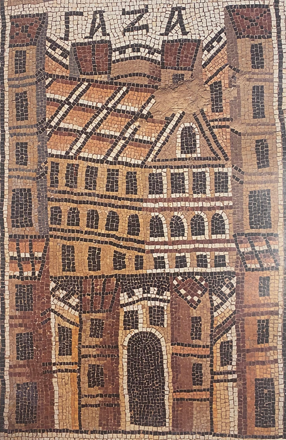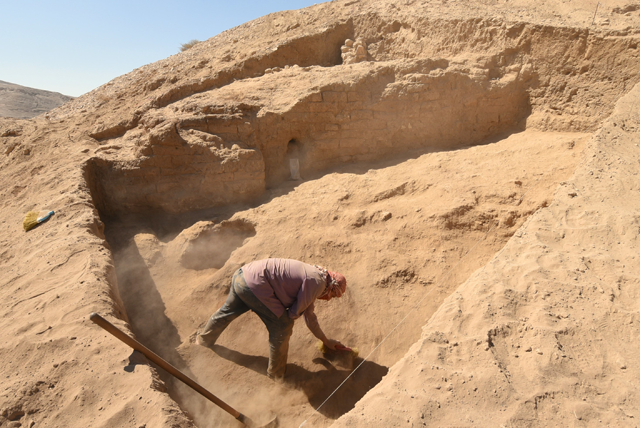You are here
Gaza’s historical, cultural heritage under threat of total destruction — experts
By Saeb Rawashdeh - Oct 31,2023 - Last updated at Nov 01,2023

A mosaic at the church of St Stephen at Umm at-Rasas in Jordan depicts ancient Gaza (Photo courtesy of Mohammad Najjar)
AMMAN — Settlements in the region of Gaza date back to the beginning of the 3rd millennium BC, noted a Jordanian archaeologist, highlighting that the Early to Middle Bronze occupation was documented at Tell es-Sakan and Tell el-‘Ajul.
“During the 14th century BC, Gaza was Egypt’s administrative capital in the Levant. Later on, during the Iron Age [2nd-1st Millenium BC], Gaza had become one of the five Philistine cities known as Pentapolis,” noted Mohammad Najar, who received a PhD degree in History and Archaeology at Moscow Institute of Archaeology.
The region continued to be important during the Neo-Assyrian, Neo-Babylonian, Persian, Nabataean, Hellenistic, Roman, Byzantine and Islamic periods.
Furthermore, Gaza was an important trade hub between the Mediterranean Sea and the Arabian Peninsula, and during the Roman/Byzantine period, Gaza became a Christian bishopric.
“The region had become part of the Muslim Empire in AD638,” Najjar said, adding that the most of the known sites are located to the north of Wadi Gaza, the area that has been exposed to severe and systematic destruction by Israeli occupying forces.
The significant sites include a necropolis dated to the Roman period, Tell Umm-‘Amer (St Hilarion monastery), a local saint who lived between AD291 and AD371.
“St Hilarion and St Porphyrius were credited for the conversion of the southern Palestine into Christianity. Three churches, among them St. Porphyrius had been already targeted along with 47 mosques, hospitals and thousands of homes and civilian targets,” Najjar underlined.
The relentless bombardment had already destroyed countless homes and displaced hundreds of thousands of Palestinians, putting many archaeological and cultural sites of Gaza at a severe risk and threatening them with the total destruction, Najjar said.
Because of the continuing Israeli aggression on Gaza, Najjar thinks that the world should step up and voice its discontent.
“Heritage communities in the Arab World and the world at large should speak up against the destruction of these heritage sites, and above all, unspeakable atrocities against Palestinians, the custodians of this heritage,” Najjar underscored.
Related Articles
AMMAN — Near the entrance to Ramtha, in Irbid, lies Tell Al Rumayth, a fortified settlement situated at the southern borders of the Aramean
GAZA — Construction workers in Gaza have discovered ancient ruins that archaeologists say may be part of a Byzantine church dating from arou
AMMAN — Tell Bleibil is a site located in the southern Jordan Valley, where a team of German archaeologists has been excavating for years.


















